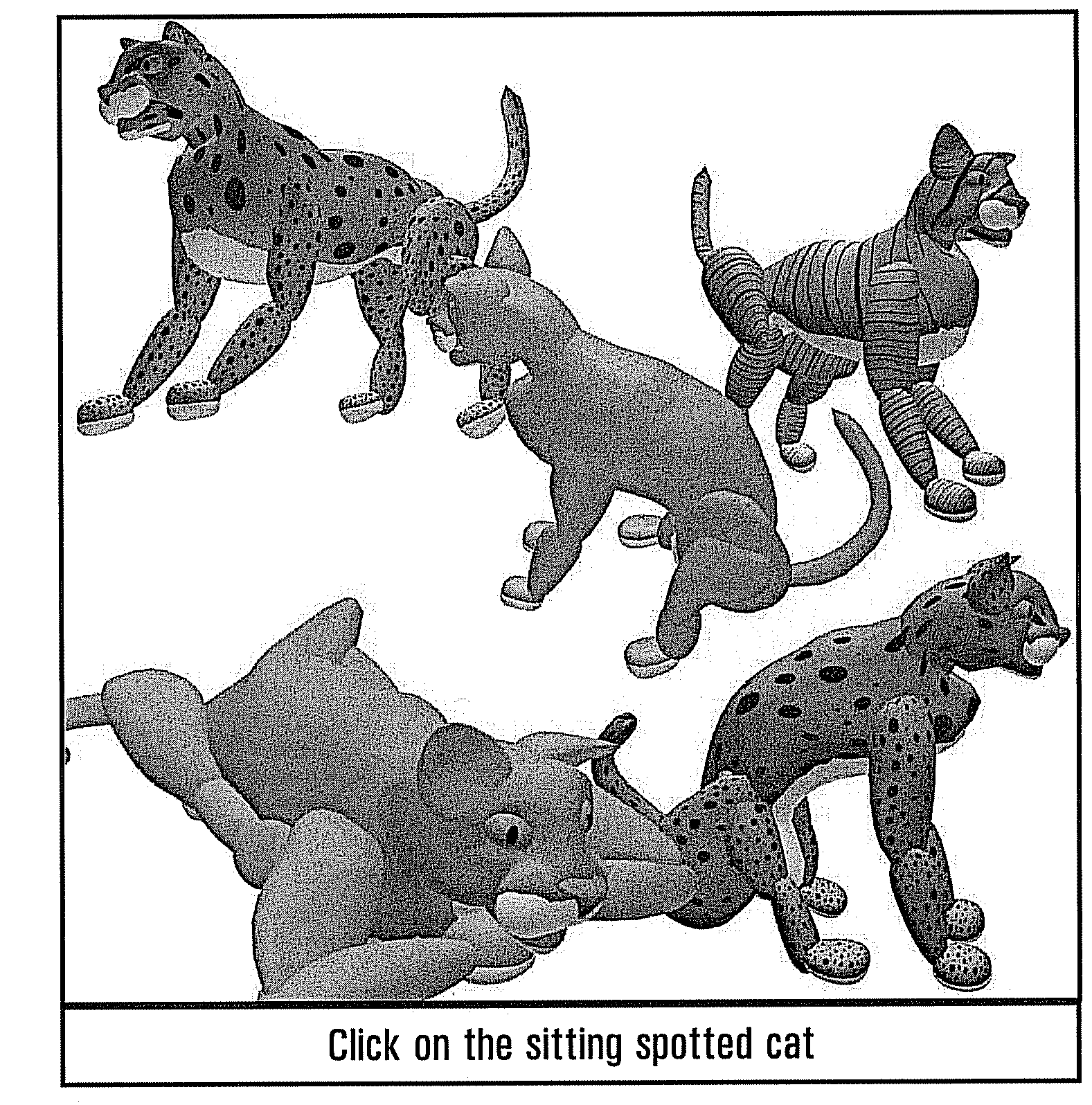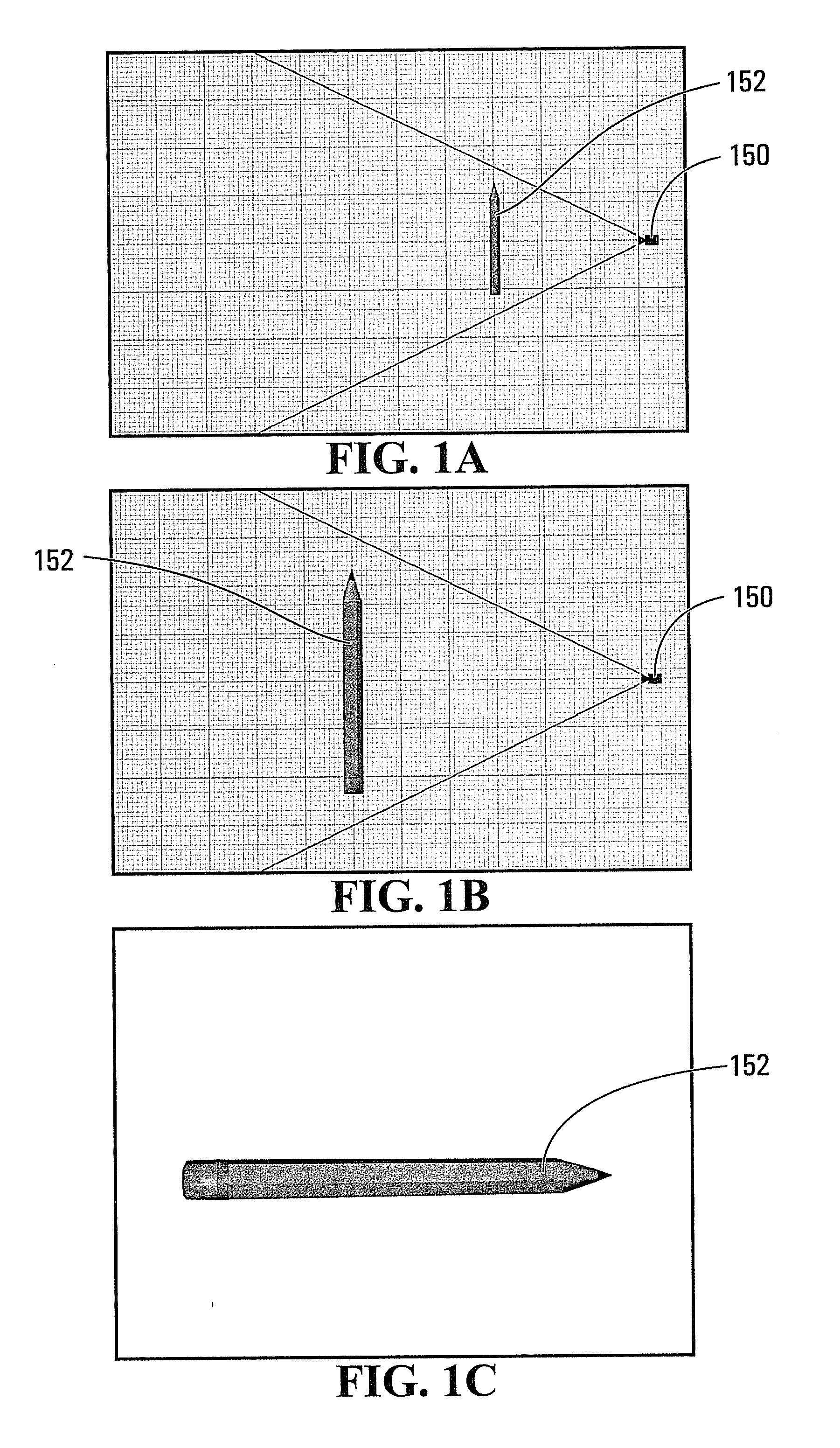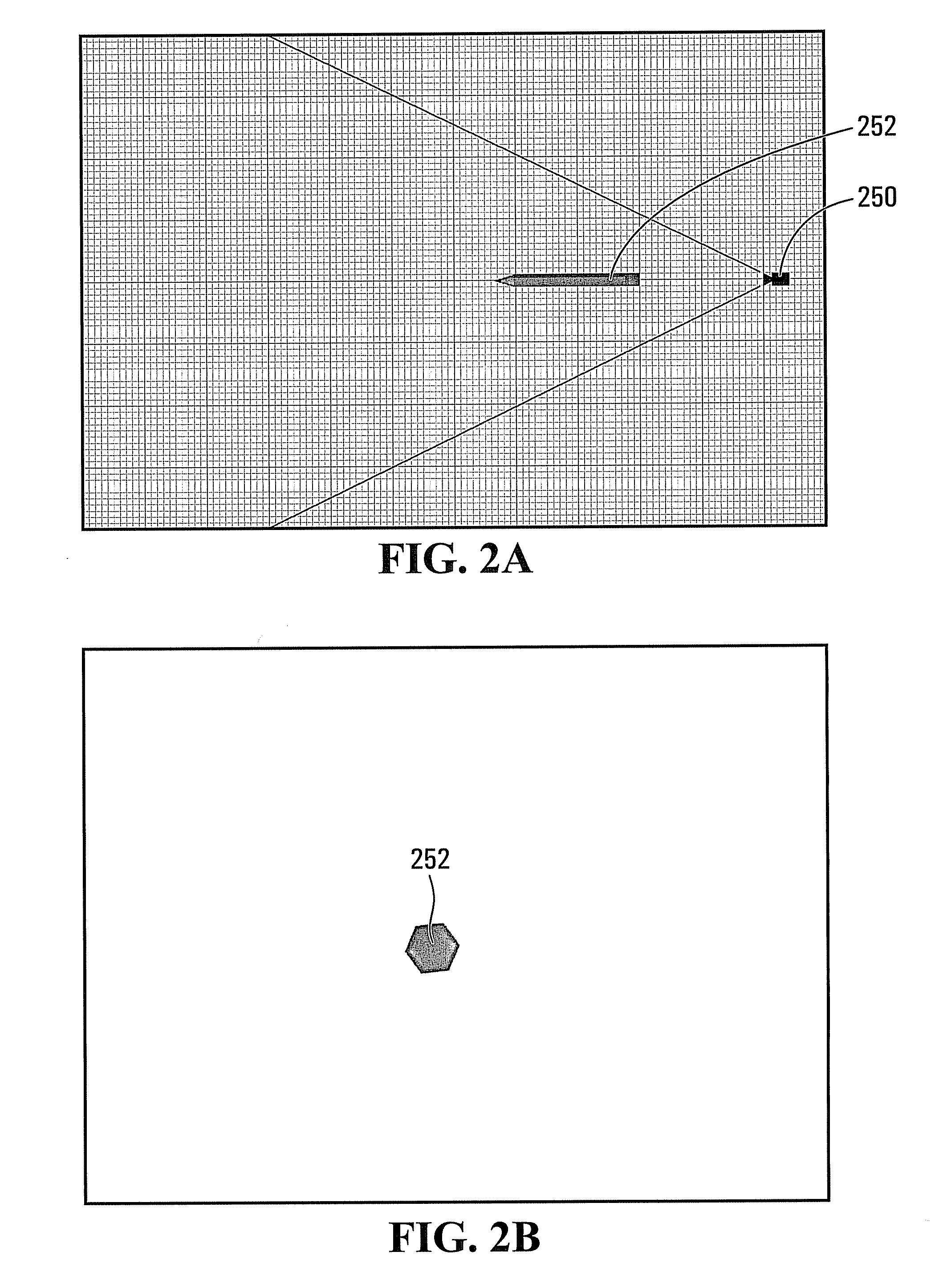Method and Apparatus for Network Authentication of Human Interaction and User Identity
a network authentication and user identity technology, applied in the field of network authentication, can solve problems such as difficulty in accurately solving the problem of a computer running an attack automated process, method prone to exploitation, and software becoming increasingly sophisticated
- Summary
- Abstract
- Description
- Claims
- Application Information
AI Technical Summary
Benefits of technology
Problems solved by technology
Method used
Image
Examples
Embodiment Construction
[0052]In one embodiment, the present invention includes three aspects: (i) image formation from object model; (ii) presentation of image choices, and (iii) user action.
[0053]Image formation includes the creation of categorized 2-dimensional images with object regions for each image automatically qualified. These categorized images can be created by means of a Randomizable Image Generation Object for Human Recognition (RIGOHR), comprised of (i) a 3-dimensional object model, (ii) a plurality of rendering threshold and constraint parameters, and (iii) categorization and qualitative metadata. The inventors have coined the acronym RIGOHR to describe this technology and for brevity and consistency, the term RIGOHR is used in this application when discussing this technology.
[0054]RIGOHR is part of a computer implemented method which automates the generation of images such that any 3-dimensional object may be presented to a user in 2-dimensional form with a high degree of random variation w...
PUM
 Login to View More
Login to View More Abstract
Description
Claims
Application Information
 Login to View More
Login to View More - R&D
- Intellectual Property
- Life Sciences
- Materials
- Tech Scout
- Unparalleled Data Quality
- Higher Quality Content
- 60% Fewer Hallucinations
Browse by: Latest US Patents, China's latest patents, Technical Efficacy Thesaurus, Application Domain, Technology Topic, Popular Technical Reports.
© 2025 PatSnap. All rights reserved.Legal|Privacy policy|Modern Slavery Act Transparency Statement|Sitemap|About US| Contact US: help@patsnap.com



